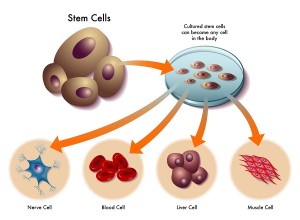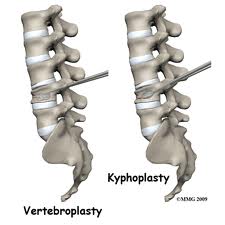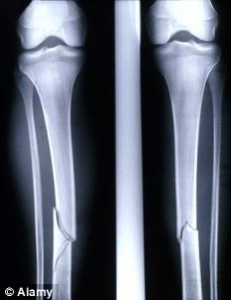One of the driving hormones in a man is testosterone. We also know that with age this hormone level falls. The lesser known fact is the importance of monitoring testosterone levels in aging males. This way they have the choice of intervening with the aging process. Here are the facts about the male hormone and about replacement of it when it is low. I will also discuss the anxieties of the medical profession to deal with this. Some feel uncomfortable about hormone replacements.
Androgen receptors contained in key tissues
Androgen receptors are situated in the key organs like the brain, heart, muscles, bones, kidneys, fat cells, genitals, hair follicles and skin. They respond to all male hormones, called androgens, like testosterone, dihydrotestosterone (DHT) and DHEA. DHT is produced by metabolizing testosterone with the help of an enzyme, called 5α-reductase in the adrenal glands. This is responsible for hair loss in males and some females. There is a genetic factor for this. It is important that the man continues to have all tissues stimulated by his male hormones when he ages or the key organs mentioned are going to suffer.
A lack of the male hormone as the man ages (around 55 to 65) leads to a slowdown in thinking, osteoporosis in the bones, muscle atrophy (melting in of muscle tissue), and a lack of sex drive. Mood swings can turn the male into the “grumpy old man”. The skin gets thinned and is more brittle.
Animal experiments have shown that the development of fatty streaks in blood vessels happens at a higher rate in castrated animals. The more encouraging finding in these animals is the fact that this condition is reversible by replacement of the male hormone. In healthy males of a younger age all organs are working well. The problems starts when males age and the hormone regulation in the brain slows down, which ultimately leads to andropause in males, the equivalent of menopause in women. When the physician replaces testosterone in an aging man who has low testosterone levels, the stimulation of androgen receptors in key organs, which I mentioned before return organ function to normal.
Reluctance of physicians to prescribe testosterone
In the past medical students were taught that testosterone is causing prostate cancer. This was based on old observations by Dr. Huggins, a Canadian born surgeon who practiced in Chicago, that orchiectomy improved the survival of advanced prostate cancer patients by a small percentage. Dr. Lee pointed out that Dr. Huggins neglected to realize that testicles make both the male hormone and small amounts of estrogen.
History of hormone ablation therapy for prostate cancer
When an orchiectomy was done (because of the belief that the male hormone production was the culprit) inadvertently the real cause of prostate cancer (an estrogen surplus) was also removed thus improving the survival of these patients somewhat. Nowadays we have more sophisticated testing methods. Dr. Abraham Morgentaler (Ref. 1) has compiled a lot of evidence about the importance of testosterone in men. He proved, based on a lot more modern references that it is not testosterone that is the cause of prostate cancer. We know now that estrogen dominance is responsible for prostate cancer and that this develops as stated above because of the low testosterone and low progesterone during the male menopause (also called “andropause”).
Rebuttal of Dr. Huggins’ research
Dr. Morgentaler, a urologist from Harvard University has taken prostate cancer patients and put them on testosterone. To his and everyone else’s surprise testosterone treated prostate cancer patients improved, their prostate cancer either disappeared or become much less aggressive, which can be measured with the Gleason score based on its microscopic appearance. The result was that they did better, not worse on male hormone replacement.
Older physicians still hold on to the belief that testosterone would make prostate cancer worse
Unfortunately the history of male hormone production, orchiectomy and prostate cancer as explained led to confusion among the medical profession. We now know that testosterone is innocent with respect to prostate cancer, testicular cancer or any other cancer. But some of the old-timers among the physicians doggedly hold on to their false belief from the past. If a man asks one of these physicians for testosterone replacement he may not only be told that he/she could not do that, but will also receive a tirade of false statements about testosterone.
No blood clots with male hormone replacement
We dealt with the myth of prostate cancer that is not related to treatment with the male hormone. There is another myth that older physicians often cite: that testosterone would supposedly be causing blood clots. At the University of Texas Medical Branch at Galveston (Texas, USA) a large study was done involving 30,572 men, ages 40 years and older. All had venous thromboembolism and received an anticoagulant drug or an intravascular vena cava filter following their diagnosis. Because they also had a low testosterone level physicians gave them testosterone replacement therapy. In addition, they followed them and monitored them for further venous thromboembolism. None were found in any of the men. The conclusion of the investigators was that filling a testosterone prescription was not associated with any clotting condition.
Aging and testosterone
A longitudinal study showed that testosterone has been declining in the male population over a period of 20 years. Partially there is a relationship to aging. Otherwise estrogen-like substances or xenoestrogens, which are environmental factors, contribute to it as well. Although age is a factor, there is so much variation from man to man, that it is best to just measure testosterone and determine whether the mail hormone level is above or below 500 ng/dL. This seems to be the most reliable indicator in determining whether a man needs hormone replacement, apart from symptoms due to testosterone loss. These are: increased risks for prostate problems and/or cancer, cardiovascular disease, loss of bone density, a rise in cholesterol and urinary dysfunction. Dr. Randolph describes this in detail and also discusses who needs bioidentical testosterone replacement.
The aging male and hormone replacement
A New England Journal of Medicine study from September 2013 explained that apart from testosterone the male body needs a small amount of estradiol, the female hormone. The enzyme aromatase within the fatty tissue achieves this. But the physician must prescribe testosterone replacement as the bioidentical testosterone, so that a small amount of it converts into estradiol by the action of aromatase. Synthetic male hormone compounds with chemical side chains do not provide this small estrogen metabolism.
After a review of the hard facts about prostate cancer risk, it is now clear that older men get prostate cancer because testosterone in their blood is low and their body weight elevation. The extra fat converts androgens by the aromatase into estradiol. This leads to estrogen dominance. This causes breast cancer and uterine cancer in women, prostate cancer in men. When the total testosterone level in a man is lower than 500 ng/dL it is a sign that he needs male hormones to protect his prostate from prostate cancer.
Cardiovascular disease and testosterone
The cardiovascular system has a lot of androgen receptors on its cell surfaces. It is important that the man continues to have the proper stimulus from androgenic hormones (testosterone, dihydrotestosterone and DHEA). This will allow him to have proper contractility of heart cells. It will also allow for relaxation of smooth muscle cells in the arteries to control blood pressure. With a lack of male hormones there is hardening of the arteries, loss of muscle cells in the heart muscle and increase of blood pressure. So far researchers have only noticed an association of low testosterone with diabetes, high blood pressure and heart attacks. It has not been proven that it is the cause (so webmd.com says). But careful replacement with bioidentical testosterone helps patients to get rid of their symptoms, have the energy to exercise and feel better.
Is it safe to replace missing hormones in a male?
Long-term studies have already shown that hormone replacement saves lives, but the medical profession is slow to accept this (Ref.1). Here is a link that explains this a bit further.
If a man who is low in male hormones wonders whether it would be worthwhile to go on testosterone therapy, here is the clear answer: would you like to have a 47% lowered risk of dying, a reduction of 18% in heart attacks and 30% reduction in the risk for a stroke? This is what a 14-year follow-up study published in the European Heart Journal in August, 2015 found.
The same is true for cardiovascular disease as stated above: if the total testosterone level in a man is lower than 500 ng/dL it is a sign that he needs testosterone replacement therapy to protect his cardiovascular system to prevent heart attacks and strokes.
Loss of bone density with a lack of testosterone
Older men can get osteoporosis, which can lead to compression fractures in the spine. In addition fractures can also occur in the hip, the ankle or wrist. Current thinking is that with the lack of male hormones there is also a lack of estradiol via the aromatase pathway in fatty tissue. This small amount of estradiol is able to prevent osteoporosis all his life until testosterone drops with older age. Once again it is important to monitor his male hormone level and replace with bioidentical testosterone when it is lower than 500 ng/dL.
Rise in cholesterol
With obesity there is a metabolic change, called metabolic syndrome. This leads to an elevation of LDL cholesterol, which is a direct risk for hardening of the arteries. In an obese older man with low male hormones there is a double risk. First, there is the low testosterone and secondly the metabolic syndrome, if he is overweight or obese. As a result the heart attack and stroke rates in obese men with low testosterone are much higher. In obese men with normal male hormone levels there are less heart attacks and strokes. Men with obesity need to lose weight by changing their diet to healthier eating habits and starting a regular exercise program with swimming and walking. At the same time those with a testosterone level of lower than 500 ng/dL should have bioidentical testosterone replacement.
Urinary dysfunction
A hyperactive bladder, dribbling, hesitancy and leaking bladder can all be part of male hormone deficiency. But this is not that easy to diagnose. A full consultation by a urologist may be necessary to assess various other causes that could hide behind these symptoms. Part of the work-up though is to measure the total testosterone level and replace what is missing.
Alzheimer’s disease
Alzheimer’s disease can be due to a lack of male hormones. It is therefore important to measure the total testosterone level in a man. If it is lower than 500 ng/dL, as mentioned before , it means he needs male hormone replacement therapy. This will prevent Alzheimer’s disease.
Burnout
According to Dr. Thierry Hertoghe, an endocrinologist from Belgium, there are several hormones that can be missing in a person with burnout: a lack of cortisol, thyroid, growth hormone, testosterone/estrogen, progesterone and oxytocin. The middle-aged manager with burnout would have other hormones missing apart from testosterone. The physician needs to order blood tests to measure whether other hormones are missing. Whatever is low needs replacement with bioidentical hormones.
Some details regarding testosterone measurements and delivery
The deeper you delve into male hormone replacement, the more details there are to consider. First, there is a sex hormone-binding globulin that is mostly produced by the liver and circulating in the blood. It is like a storage form of testosterone and only 1 to 2% of the total testosterone is unbound. This is called the free or bioavailable testosterone. Some physicians measure just that portion of testosterone.
Hormone replacement in a man
Second, when it comes to replacement of testosterone in a man who is deficient for testosterone, there are several delivery systems, which some people find a little confusing. There are testosterone gels with less than optimal absorption. Another application are creams that compounding pharmacies provide. The patient absorbs these creams usually quite well. But some men do not absorb either creams or gels. They need testosterone injections or testosterone pellets. The goal is to replace testosterone in a manner that there is a fairly equal amount of testosterone available circulating in the blood at all times. Some men achieve that only with testosterone pellets, others with testosterone cypionate injections. For this reason blood test that determine the levels of free testosterone are necessary at intervals of about 3 months.
Conclusion
Testosterone is a key hormone in the male that requires monitoring, particularly when he is aging. A knowledgeable physician or naturopath needs to take a careful history of his symptoms. If blood tests show that the total testosterone is less than 500 ng/dL the physician needs to replace with bioidentical testosterone.
References
Ref.1: Dr. Abraham Morgentaler: “Testosterone for Life – recharge your vitality, sex drive, and overall health” McGraw-Hill, 2009















